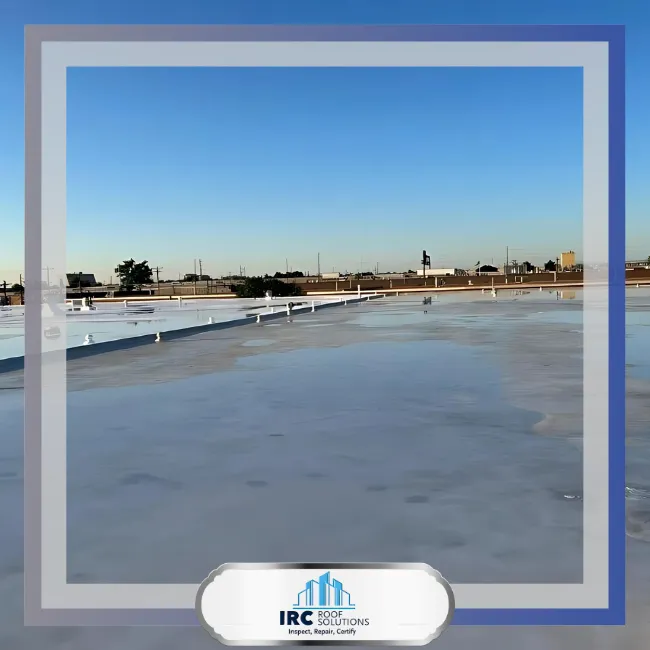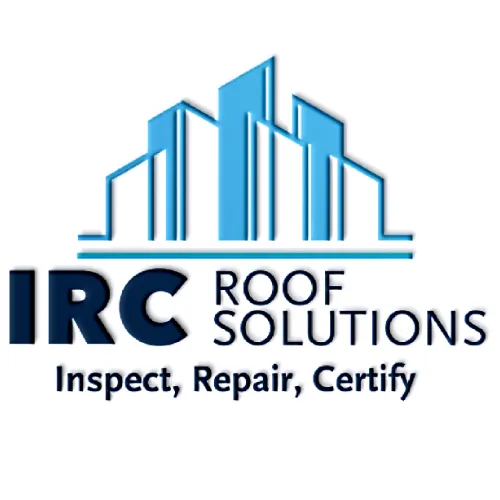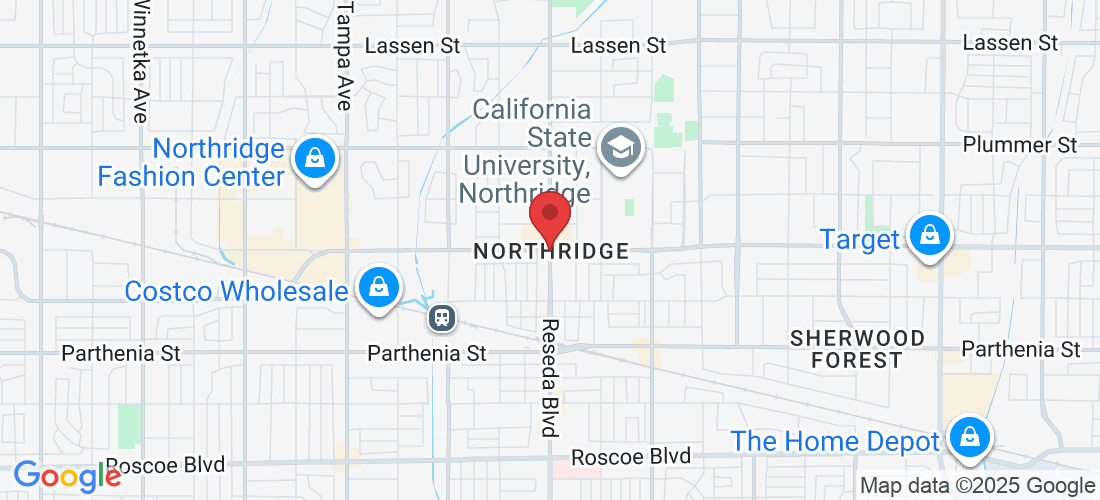Sponsored





Roof Maintenance in Northridge, CA
Extend The Life Of Your Roof With Local Expert Care
Protect your home or business with professional roof maintenance from Northridge’s trusted specialists. Regular inspections and upkeep help prevent costly repairs, improve energy efficiency, and ensure your roof stands strong against the elements. Browse our directory to find reliable roof maintenance providers in Northridge and schedule your service today.
Roof Maintenance - Northridge - Why Hire a Professional Roof Maintenance Service
Proactive Care That Protects Your Home, Budget, and Peace of Mind
Why Roof Maintenance in Northridge Can’t Be an Afterthought
In a community like Northridge, where long sunny seasons are punctuated by bursts of rain and the occasional wind event, your roof works overtime. UV exposure dries out sealants, heat cycles fatigue materials, and the first heavy downpour after a dry spell can expose every weakness. Routine roof maintenance isn’t just a box to check—it's the difference between a predictable, low-cost upkeep plan and surprise repair bills that disrupt your life.
Hiring a professional roof maintenance service in Northridge ensures your roofing system receives disciplined inspections, targeted tune-ups, and timely fixes. Pros don’t just look for what’s broken—they look for what will break next. That forward-looking approach keeps minor issues minor, maximizes the service life of shingles, tiles, or membranes, and preserves the manufacturer’s warranty in many cases.
Whether you own a single-family home near suburban corridors or a duplex that sees more foot traffic on rooftop equipment, consistent professional maintenance helps your roof do its most important job: keep the weather out and your comfort in. The best part? Preventive care typically costs a fraction of a single emergency leak response or interior Commercial Roofer after water intrusion.
DIY vs. Professional Roof Maintenance: What’s the Real Difference?
It’s tempting to climb a ladder, hose off some debris, and call it “maintenance.” But a qualified Northridge roof maintenance technician brings trained eyes, calibrated tools, and safety protocols you simply can’t replicate with a casual weekend effort. Professionals understand how different roofing systems—composition shingles, clay or concrete tile, modified bitumen, TPO, PVC, or wood shake—age in our local climate and which failure points show up first.
A professional roof maintenance service also documents every visit. That record—complete with photos, condition scores, and repair notes—becomes your roadmap. It helps you plan budget-friendly upgrades, schedule coating or sealant refreshes at the right intervals, and prove diligent care to a buyer or insurer if you sell or file a claim. And because licensed pros carry insurance and follow OSHA safety standards, you avoid the risk of falls, property damage, or voided warranties tied to improper work.
Most importantly, pros troubleshoot the causes behind symptoms. A homeowner might see a ceiling spot and aim a patch at the nearest suspect. A seasoned technician traces the leak path, checks underlayment conditions, inspects penetrations, and evaluates slope and drainage to fix the root problem, not just the visible stain.
What a Professional Roof Maintenance Visit Includes
A thorough Northridge roof maintenance checklist is systematic. It often begins with a perimeter walk to note fascia, soffits, and siding tie-ins; moves to a rooftop inspection for shingles, tiles, or membranes; and then evaluates flashing, vents, skylights, chimneys, and parapet walls. The technician will clear debris, check gutters and downspouts for flow and fastening, and verify that drains and scuppers aren’t restricted by granules or leaves.
After the visual survey, pros tighten loose mechanical fasteners, re-seal cracked lap joints, refresh UV-exposed mastics, and re-bed or reset tiles as needed. On low-slope roofs, they check membrane seams, re-coat susceptible areas, and test for soft spots that could signal moisture intrusion. On shingle roofs, they look for lifted tabs, missing nails, and brittle areas near penetrations—especially around attic vents, satellite mounts, or solar standoffs common in Northridge neighborhoods.
Many professional roof maintenance services also include attic checks. From inside, they look for daylight at penetrations, damp insulation, active drips, or moldy sheathing that may not yet show outside. This inside–out verification catches slow leaks early and helps validate that roof ventilation and intake/exhaust balance are correct—key for temperature control and material longevity.
Top Northridge Roof Stressors—and How Pros Mitigate Them
Sun and heat: Prolonged UV exposure breaks down asphalt binders and dries mastics. A professional maintenance plan includes timely coating schedules, sealant refreshes, and material-specific conditioning to slow aging. Reflective treatments on low-slope roofs can reduce heat load and extend service life when applied and maintained correctly.
Debris and drainage: Our leafy streets and seasonal winds send leaves, twigs, and granules into gutters and over drains. Clogged pathways cause ponding or backflow under laps. Professional roof maintenance services in Northridge pair cleaning with hardware checks, ensuring hangers are tight, downspouts are free, and scupper edges are properly flashed and sealed.
Weather swings: Cool nights and hot days expand and contract materials. Pros anticipate thermal movement by checking slip allowances at flashing, maintaining expansion joints, and monitoring stress points at rooftop equipment curbs or skylight frames. This proactive attention limits cracking and seam separation.
Foot traffic: HVAC service calls and satellite installs can crush granules or crack tiles. A professional roof maintenance service recommends and installs walk pads or stepping paths, then reinspects after trades complete their work. That coordination keeps your warranty intact and your surface protected.
How Professional Roof Maintenance Saves You Money (and Headaches)
The financial case for professional roof maintenance in Northridge is simple: small, scheduled tune-ups prevent big, unscheduled emergencies. A sealed flashing today can prevent sheetrock replacement, flooring repair, and mold remediation tomorrow. Regular care also reduces the frequency of full roof replacements by maximizing the useful life of what you already own.
Professionals also help you plan capital improvements. With condition reports and age tracking, you can budget for phased work—like coating a low-slope section this year and re-flashing ridges the next—rather than paying for a rushed replacement after a storm. Predictable costs reduce stress and keep your home improvement plan on your terms.
Energy savings add up, too. Proper ventilation and intact insulation reduce attic heat, which lightens the load on your AC in the Northridge summer. Pros check baffles, clear intake vents, and confirm that exhaust vents aren’t blocked by paint or debris—small details that pay you back every month.
Common Findings During Northridge Roof Maintenance Visits
Cracked or dried sealants around pipe boots, skylights, and counterflashing are frequent. Left alone, hairline gaps become leak paths. Professionals clean, prime, and re-seal with compatible products for each roof type.
Lifted shingles or tiles at the edges show up after windy spells. Technicians reset fasteners, replace missing pieces, and verify underlayment integrity so gusts don’t turn a small repair into a larger replacement.
Ponding on low-slope sections can indicate insufficient slope or clogged drains. Pros clear pathways, add crickets where feasible, and recommend strategic re-sloping or tapered insulation during future upgrades.
Granule loss on aging shingles is common in high-heat zones. A professional roof maintenance service documents wear patterns to anticipate replacement timelines, helping you avoid surprises.
What to Look For When Choosing a Professional Roof Maintenance Service
Choose a Northridge roofing company that offers written maintenance plans, photo reports, and itemized recommendations with priority levels. Ask about technician certifications, proof of insurance, and familiarity with your specific roof type—tile, shingle, or low-slope membrane. Local experience matters; a team that understands valley debris patterns, sun exposure on south-facing slopes, and common neighborhood roof assemblies will spot issues faster.
Look for transparent pricing and clear scopes. A solid plan might include biannual inspections (pre- and post-rainy season), gutter cleaning, sealant refreshes, flashing tune-ups, and minor repair allowances. Many homeowners appreciate subscription-style maintenance because it’s set-and-forget: your provider schedules visits at the right intervals and keeps you updated with easy-to-read reports.
Finally, evaluate communication. The best professional roof maintenance services in Northridge share before-and-after photos, explain findings in plain language, and provide options—repair now, monitor till next visit, or plan an upgrade—so you stay in control.
A Year-Round Roof Maintenance Calendar for Northridge Homeowners
Late Winter–Early Spring: Inspect for moisture marks after seasonal rains; clear gutters and confirm downspout flow. Pros check for swelling at fascia, re-secure loose brackets, and verify that attic ventilation kept condensation at bay.
Late Spring: Prep for summer heat by refreshing exposed sealants, tightening fasteners, and assessing reflective coatings on low-slope areas. This is the time to address minor tile resets or ridge cap touch-ups before thermal cycles intensify.
Mid–Late Summer: Quick health check for sun-baked surfaces, especially south- and west-facing slopes. Pros may recommend spot-cooling measures (like coating topcoat touch-ups) for vulnerable low-slope sections to reduce heat stress.
Fall: A full service before the rain: debris removal, gutter cleaning, flashing inspections, and sealing around penetrations. The goal is to enter the wet season with a tight envelope and clean drainage paths.
Roof Maintenance for Different Materials
Asphalt Shingle: Inspect for curling, granular bald spots, lifted tabs, and nail pops. Pros replace damaged shingles, re-seat fasteners, and seal around accessories to prevent capillary leaks.
Clay or Concrete Tile: Tile systems rely on underlayment. Technicians replace broken tiles, re-bed ridge caps, clear channels, and evaluate underlayment aging where slips or tears appear at valleys and penetrations.
Low-Slope Membranes (TPO/PVC/Mod-Bit): Heat-welded seams and lap joints get special attention. Maintenance includes seam probing, patching scuffs, reinforcing transitions, and keeping drains and scuppers spotless.
Wood Shake/Shingle: In dry climates, shakes can split or cup. Pros replace compromised pieces, clear debris that traps moisture, and ensure defensible-space cleanliness for ember resistance.
Safety and Compliance: Another Reason to Go Pro
Roof work is high-risk. Professional roof maintenance teams follow strict ladder setup, fall protection, and footwear standards, and they’re trained to navigate fragile surfaces without causing damage. They also understand permit triggers, manufacturer specs for compatible sealants, and how to maintain fire and weather ratings during repairs. That combination of safety and compliance protects both your property and your liability.
When Maintenance Uncovers Bigger Needs
Sometimes an inspection reveals issues that go beyond routine care—deteriorated underlayment, widespread granule loss, chronic ponding, or systemic flashing failures. A reputable Northridge roof maintenance provider will show you the evidence and outline phased solutions: stabilize now, plan partial replacements, or budget for a full re-roof with modern materials and improved details. Because they’ve been tracking your roof, they can prioritize in a way that makes financial sense.
The Local Advantage: Northridge-Specific Know‑How
Local professionals bring neighborhood context. They know which tree species shed into gutters each season, which blocks get heavier winds, and how older housing stock was flashed or underlayed when originally built. That background allows quicker diagnoses and smarter recommendations—like adding screens to specific downspouts, reinforcing windward eaves, or scheduling extra debris checks after known high-shed periods.
Getting Started: Your First Professional Maintenance Visit
Booking a professional roof maintenance service in Northridge is simple. Expect a conversation about your roof’s age, type, and history, followed by a site visit. After the inspection, you’ll receive a written report with photos, a condition summary, immediate fixes, and a maintenance plan mapped to the seasons. From there, your provider schedules routine care and alerts you to anything that needs attention between visits—no guesswork, no last-minute scrambles before rain.
Bottom Line: Why Hire a Professional Roof Maintenance Service in Northridge
Professional roof maintenance delivers measurable value: fewer leaks, longer roof life, better comfort, lower energy use, and cleaner insurance and resale conversations. It turns your roof from a source of worry into an asset with a predictable plan. In Northridge—where sun, wind, and seasonal rains test every roof—partnering with a skilled maintenance team is one of the smartest, most cost-effective decisions you can make for your home.
Your Trusted Roofing Experts

Google: 4.9 stars
Commercial Roofing, Roof Repair, Roof Maintenance, Roof Coating, Emergency Roofing Services
(818) 571-7892
Santa Clarita, CA 91350
Website: www.ircroofs.com





Elite Roofing Company Los Angeles
19441 Business Ctr Dr UNIT 112, Northridge, CA 91324
Roofing Contractor
Phone: (877) 834-1885
Hours: Open 24 hours Sat; Mon-Sun, 8 AM - 9 PM
Northridge Roofing Masters
18860 Nordhoff St #66, Northridge, CA 91324
Roofing Contractor
Phone: (818) 740-6050
Hours: Daily, 5 AM - 10 PM
Peak Roofing Services
9275 Corbin Ave #9275, Northridge, CA 91324
Roofing Contractor
Phone: (818) 527-9043
Hours: Daily, 5 AM - 10 PM
Quality Roofing & Maintenance
18710 Bryant St, Northridge, CA 91324
Roofing Contractor
Phone: (818) 701-5037
Hours: Mon-Fri, 7 AM - 5 PM; Sat, 9 AM - 12 PM; Closed Sun
People Also Ask
Most commercial roofs benefit from semiannual inspections—typically in spring and fall—plus checks after major weather events. These visits verify drainage, flashing integrity, membrane condition, and perimeter details, and they address minor defects before they become leaks. Frequency may increase for roofs with heavy foot traffic, aging membranes, complex mechanical equipment, or debris‑prone surroundings. Routine maintenance tasks include clearing drains and gutters, tightening edge metal, touching up sealants, patching small punctures, and documenting conditions with photos. Consistent scheduling supports warranty requirements, improves energy performance by keeping insulation dry, and extends service life. A maintenance calendar, paired with a roof log that tracks repairs and observations, helps owners plan budgets and make data‑driven decisions about repair versus replacement over time.
A proactive program focuses on drainage, details, and documentation. Technicians remove debris from drains, scuppers, and gutters; verify strainers are in place; and confirm positive slope to outlets. They inspect seams, terminations, and flashing at curbs, parapets, skylights, and penetrations, making minor repairs as needed. Edge metal and counter‑flashing are checked for securement and sealant condition. Walk pads are evaluated along service routes, with recommendations for added protection where traffic is concentrated. The team reviews roof access conditions and signage, photographs findings, and updates a roof plan showing repair locations. The result is a clear punch list of corrective actions and a record that supports warranties, budgeting, and future capital planning.
Effective drainage is essential because standing water accelerates membrane deterioration, increases live loads, and can lead to leaks at seams and penetrations. Maintenance visits should verify that drains, scuppers, and gutters are clear; strainers are secured; and water is directed away from walls and equipment. The roof should maintain a slight slope toward outlets, with no depressions that hold water longer than 24–48 hours after rain. If ponding is present, technicians may recommend adding tapered insulation, adjusting crickets, or leveling local low spots. They also check for sediment rings—evidence of prior ponding—inspect joints around drain bowls, and confirm that downspouts discharge freely. Addressing drainage issues promptly helps keep insulation dry and maintains warranty compliance.
Properly executed maintenance typically supports warranty coverage by preserving the roof’s condition and documenting care. Many manufacturers expect owners to perform regular inspections and promptly repair damage using compatible materials. Unapproved products, incompatible patches, or alterations to drainage and edge details can jeopardize coverage. It’s wise to identify the roof system and review warranty terms before any work, ensuring technicians follow the manufacturer’s guidelines for cleaning, priming, and patching. Keep detailed records—work orders, photos, and material data sheets—to show adherence to requirements. When in doubt, consult the warranty provider for direction on repair methods, especially for larger patches, extensive wet insulation replacement, or changes to rooftop equipment supports.
Foot traffic is a leading cause of punctures and seam damage on commercial roofs. Walk pads create durable pathways that protect the membrane at frequent service routes to HVAC units, hatches, and dashboards. During maintenance, technicians assess traffic patterns and recommend pad additions where scuffs, crushed insulation, or repeated access points are observed. Clear access protocols—such as designated entry points, signage, and requiring service trades to use pads—reduce accidental damage. Regular reviews of ladder security, hatch hardware, and fall protection also improve safety. Together, these measures lower leak risk, preserve insulation integrity, and keep the roof performing as designed over its full expected service life.
Coatings can complement maintenance, but they are a distinct restoration option intended to extend service life when the underlying system is dry, sound, and well‑detailed. Maintenance addresses localized defects—seams, flashings, and drainage—while a coating provides uniform surface protection and reflectivity. Before coating, a condition assessment should confirm adhesion potential, moisture levels, and compatibility with the existing membrane. Surface preparation, primer selection, and proper film thickness are critical to performance. For some roofs, targeted repairs plus routine care provide better value; for others nearing mid‑life, a properly specified coating system can delay replacement and improve energy performance. The best approach depends on existing conditions, climate, and long‑term plans for the building.
Organic growth and debris trap moisture, block drainage, and degrade membranes. Maintenance includes removing leaves and branches, trimming overhanging limbs, and clearing sediment from ponding areas. Technicians may recommend safe cleaning methods compatible with the roof system—avoiding harsh chemicals or abrasive tools that could damage the surface. Around penetrations and parapets, debris is carefully lifted to inspect for concealed defects. Where vegetation persists, improved airflow and sunlight exposure, combined with regular cleaning, usually resolve the issue. If rooftop gardens are present, root barriers and irrigation controls are checked to prevent unintended saturation. Keeping the roof clean supports reflectivity, reduces slip hazards, and helps maintain warranty compliance.
Before severe seasons, maintenance prioritizes resilience. Ahead of heavy rains, teams clear drains and seal critical details. Prior to high‑wind periods, they verify edge metal, coping, and securement at corners—areas subject to uplift—and ensure loose materials are removed from the roof. For freezing conditions, crews check for trapped moisture that could expand and damage seams, and confirm that snow guards or safe access plans are in place if applicable. In heat, reflective surfaces are cleaned, and expansion‑sensitive details are monitored. Emergency plans—contact info, leak response protocols, and staging for temporary dry‑in—help minimize downtime if weather overwhelms defenses.
Many leaks stem from follow‑on work by mechanical or electrical trades. A maintenance program sets expectations: require notification before rooftop tasks, escort vendors when feasible, and verify that penetrations are properly flashed after service. Crews can install additional walk pads to new equipment locations, re‑seal disturbed terminations, and ensure supports distribute loads without crushing insulation. Documentation of pre‑ and post‑work conditions reduces disputes and speeds problem resolution. Regular coordination meetings or site notes help align responsibilities so the roof remains watertight while building systems are upgraded or serviced.
Budgeting works best when informed by condition data. A baseline inspection establishes current needs and a maintenance plan with prioritized tasks—immediate leak prevention, near‑term preventive items, and enhancements like added walk pads or drainage improvements. Annual budgets typically include two routine visits, minor repairs, and a contingency for storm response. As roofs age, set aside funds for moisture surveys, targeted replacements of wet insulation, or restorative coatings when appropriate. Consistent investment in maintenance generally reduces emergency callouts, protects interior assets, and delays capital expenditures by preserving the roof’s performance and warranty standing.
A comprehensive roof log supports planning, warranty claims, and resale. Keep the original system specifications and warranty, as‑built drawings, inspection reports, core sample data, photos, and moisture survey results. Record dates and details of all repairs, materials used, and who performed the work. Map leak locations to a roof plan to identify recurring patterns. Retain correspondence with other trades that work on the roof, and note changes to rooftop equipment. Organized documentation makes it easier to evaluate performance, compare proposals, and justify maintenance budgets or larger restoration decisions based on a clear history of the roof’s condition.
Northridge: A Community Rich in Culture and Opportunity
Exploring the Heart of the San Fernando Valley
Northridge, located in the San Fernando Valley of Los Angeles, is a vibrant community known for its rich culture, diverse population, and strong educational institutions. With its beautiful neighborhoods, parks, and thriving local businesses, Northridge is a desirable place to live and work. In this article, we will delve into what makes Northridge a unique community and discuss the importance of supporting local businesses, particularly in commercial roofing.
Northridge's history dates back to the early 20th century, and it was originally an agricultural area before evolving into a suburban neighborhood. The community has grown significantly over the decades, with an influx of residents seeking the balance of urban amenities and suburban charm. Today, Northridge is known for its family-friendly atmosphere and strong sense of community.
One of Northridge's key features is its strategic location. It offers easy access to major highways and public transportation, making it convenient for residents to commute to nearby areas, including downtown Los Angeles. This accessibility has attracted many families and professionals to the area, contributing to its growth and development.
The economy of Northridge is diverse, with various industries represented, including education, healthcare, retail, and entertainment. California State University, Northridge (CSUN), is one of the largest employers in the area and plays a significant role in the local economy. The university not only provides job opportunities but also enriches the community through cultural and educational events.
Northridge is also home to a variety of local businesses, ranging from unique boutiques to restaurants and professional services. These businesses contribute to the character of the community and provide essential services to residents. Supporting local businesses fosters economic growth and helps create a vibrant community atmosphere.
Community events play a vital role in bringing residents together. The Northridge Farmers Market, held weekly, is a popular gathering spot where residents can purchase fresh produce and locally-made products. Additionally, various cultural festivals and events throughout the year celebrate the diversity of the community and encourage engagement among residents.
Northridge also prioritizes education, with a strong emphasis on providing quality schooling options for families. The Los Angeles Unified School District serves the area, offering numerous public schools that focus on academic excellence and personal growth. The presence of CSUN further enhances educational opportunities for residents of all ages.
As a community that values sustainability, Northridge is committed to preserving its natural environment. The city has implemented various initiatives aimed at promoting eco-friendly practices, such as recycling programs and water conservation efforts. Local businesses are encouraged to adopt sustainable practices, contributing to a healthier community.
The real estate market in Northridge is robust, with a variety of housing options available. From charming single-family homes to modern condominiums, the area appeals to a wide range of residents. As the community grows, so does the demand for commercial spaces, providing opportunities for new businesses to thrive.
Local businesses play a crucial role in the community’s economy. They not only provide jobs but also contribute to the local culture and identity of Northridge. Residents are encouraged to support these businesses by shopping locally and participating in community events.
As Northridge continues to grow, maintaining commercial properties is essential. One critical aspect of property maintenance is commercial roofing. A well-maintained roof protects businesses from weather-related damage and ensures the safety of employees and customers.
The climate in Northridge presents unique challenges for commercial roofing. With hot summers and occasional heavy rainfall, business owners must invest in durable roofing solutions to protect their investments. Local roofing contractors are well-equipped to handle these challenges, providing tailored services that meet the specific needs of Northridge businesses.
Partnering with local roofing experts offers business owners personalized service and valuable knowledge of the area’s specific roofing requirements. Regular maintenance and inspections are vital in preventing costly repairs and ensuring roofs remain in optimal condition.
In conclusion, Northridge, California, is a thriving community characterized by its rich culture, strong educational institutions, and diverse economy. As the city continues to evolve, the importance of supporting local businesses and maintaining commercial properties—especially roofing—becomes increasingly vital. Investing in quality roofing solutions not only protects business investments but also contributes to the overall health and vitality of the Northridge community.
References: Wikipedia


